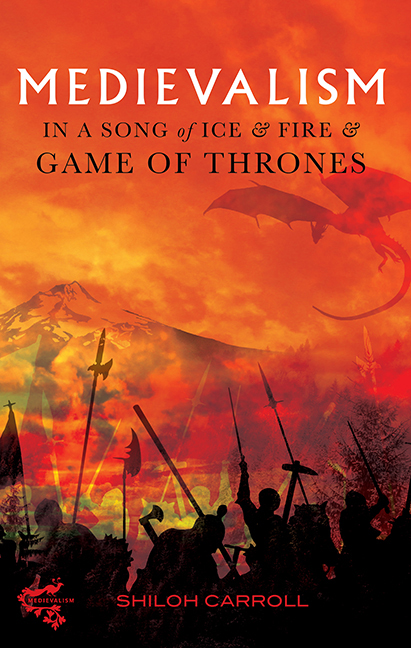Book contents
- Frontmatter
- Contents
- Acknowledgements
- Author's Note
- Introduction: Martin and Medievalist Fantasy
- 1 Chivalric Romance and Anti-Romance
- 2 Masculinity, Femininity, and Gender Relations
- 3 Sex and Sexuality
- 4 Postcolonialism, Slavery, and the Great White Hope
- 5 Adaptation and Reception
- Afterword: “Fantasy for people who hate fantasy”
- Bibliography
- Index
- Medievalism
3 - Sex and Sexuality
Published online by Cambridge University Press: 09 October 2019
- Frontmatter
- Contents
- Acknowledgements
- Author's Note
- Introduction: Martin and Medievalist Fantasy
- 1 Chivalric Romance and Anti-Romance
- 2 Masculinity, Femininity, and Gender Relations
- 3 Sex and Sexuality
- 4 Postcolonialism, Slavery, and the Great White Hope
- 5 Adaptation and Reception
- Afterword: “Fantasy for people who hate fantasy”
- Bibliography
- Index
- Medievalism
Summary
ONE OF THE REASONS A Song of Ice and Fire gets so much attention, and draws so much criticism, is its portrayal of sex. Media critics have taken exception to the explicit and numerous descriptions of consensual and non-consensual sex, especially to how those descriptions frequently victimize women. Martin has responded to these critics by pointing out that, for the most part, the violence in the books receives much less comment: “I can describe in exquisite detail an axe entering a man's skull, and splattering blood and brains – not a peep. I describe a penis entering a vagina in equivalent detail – the world is ending.” What these critics may miss is that, while at times Martin's approach to sex and sexuality can be unsettling, ultimately the texts make a point about sexuality, gender roles, societal expectations, and his belief that the people of the Middle Ages were not significantly different from people today. A side effect of amplifying the toxic masculinity and oppression of women, as discussed in the last chapter, along with Martin's “Barbaric Age” view of the Middle Ages, as discussed in the introduction, is the prevalence of rape. At the same time, Martin steps slightly outside the usual view of the Middle Ages by including portrayals of homosexuality in A Song of Ice and Fire, though these portrayals are often problematic in their own right. While his approach to rape and sexual violence has an anchor in chivalric romance, as so much of A Song of Ice and Fire does, his depictions of queer sexualities are entirely modern. Sex is a major part of A Song of Ice and Fire, both in politics and interpersonal relationships, and deserves to be examined closely and thoroughly.
“I had her before, a hunnerd times”: Male Sexuality and Rape
In chivalric romance, male sexuality is generally portrayed as disruptive, if not explicitly violent. Several times, Martin has characters express sentiments that indicate a similar outlook: for example, Varys asks Tyrion whether a man has a choice between wit and a penis, and Cersei claims that Varys is dangerous because he is a eunuch and therefore does not have his thinking clouded by testosterone.
- Type
- Chapter
- Information
- Medievalism in A Song of Ice and Fire and Game of Thrones , pp. 85 - 106Publisher: Boydell & BrewerPrint publication year: 2018

